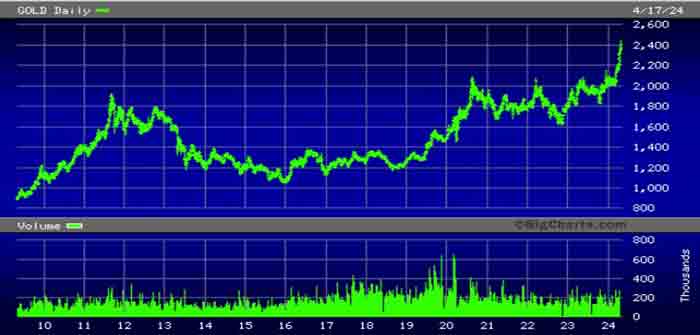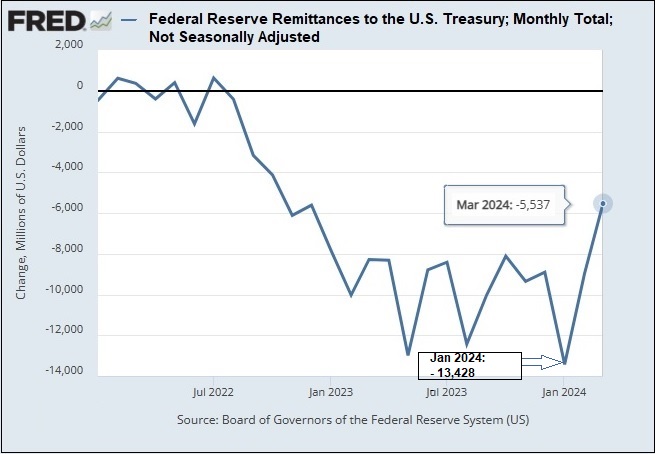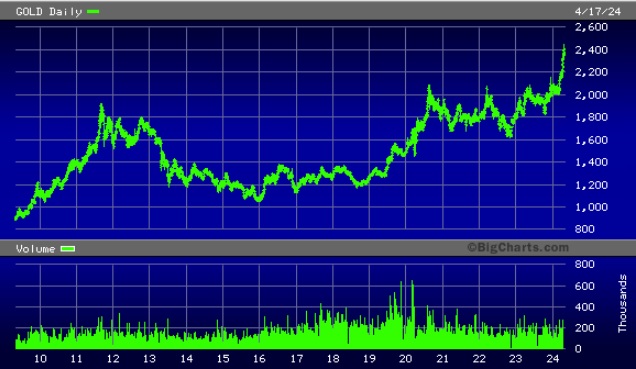

by Pam Martens and Russ Martens at Wall Street on Parade
According to Federal Reserve data, for the first time in its history, the Fed has been losing money on a consistent basis since September 28, 2022. As of the last reporting date of April 10, those losses came to a cumulative $162.9 billion. As the chart above from the Fed indicates, the monthly losses thus far in 2024 have ranged from a high of $13.4 billion in January to $5.5 billion in March.
We are not talking about unrealized losses on the debt securities the Fed holds on its balance sheet, which it acquired under its various Quantitative Easing programs. (The Fed does not mark to market the gains or losses on those securities on the basis that it plans to hold them to maturity.) We’re talking about real cash operating losses the Fed is experiencing from earning approximately 2 percent interest on its $6.97 trillion of mostly low-yielding debt securities while it continues to pay out 5.4 percent interest to the mega banks on Wall Street (and other Fed member banks) for the reserves they hold with the Fed; 5.3 percent interest it pays on reverse repo operations with the Fed; the eye-popping 6 percent dividend the Fed pays to member shareholder banks with assets of $10 billion or less; and the lesser of 6 percent or the yield on the 10-year Treasury note at the most recent auction prior to the dividend payment to banks with assets larger than $10 billion.
An interesting market action is happening in tandem with the Fed’s growing operating losses. The price of gold has been setting historic new highs this year. From a futures front month price of around $2050 at the beginning of March, gold has topped $2,400 in recent days – dramatically outperforming the year-to-date performance of the S&P 500.
Gold typically moves up when there is the threat of inflation, financial instability, or geopolitical threats. Russia’s war in Ukraine and the Middle East crisis are providing plenty of geopolitical threats; inflationary pressures have yet to be fully tamed. The Office of Financial Research’s Financial Stress Index, however, is showing a negative -1.6 reading, meaning it sees no major financial threat on the horizon. (It should be noted that the Index didn’t foresee the worst financial crash in 2008 since the Great Depression until it was in progress.)
In a note last week, the international investment bank, UBS, noted the following factors impacting the price of gold:…
Continue Reading
